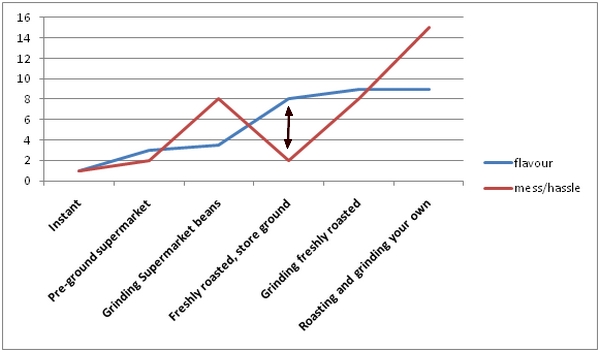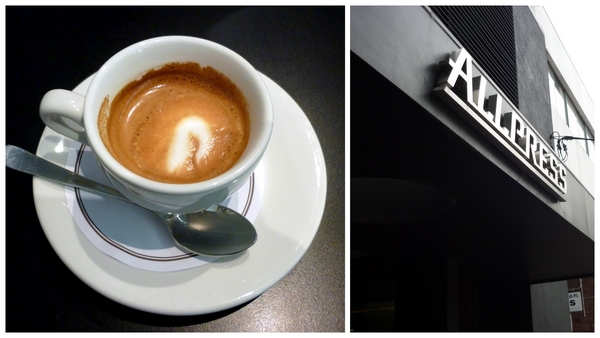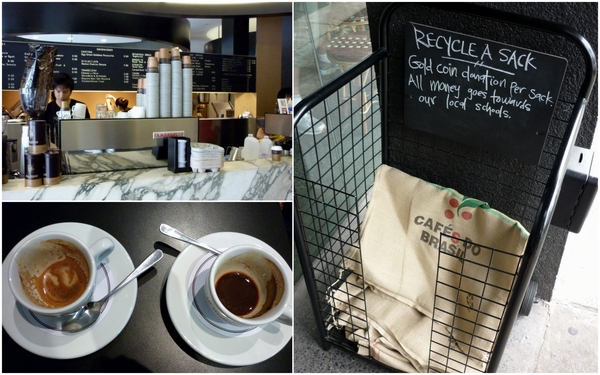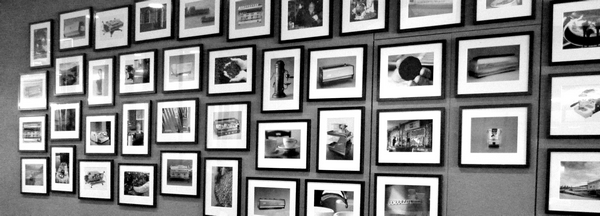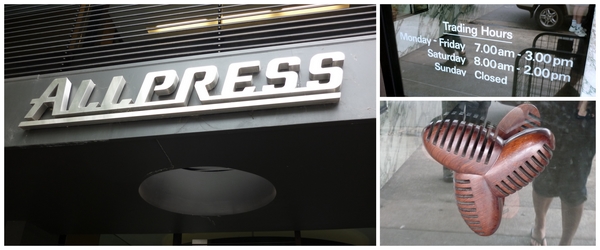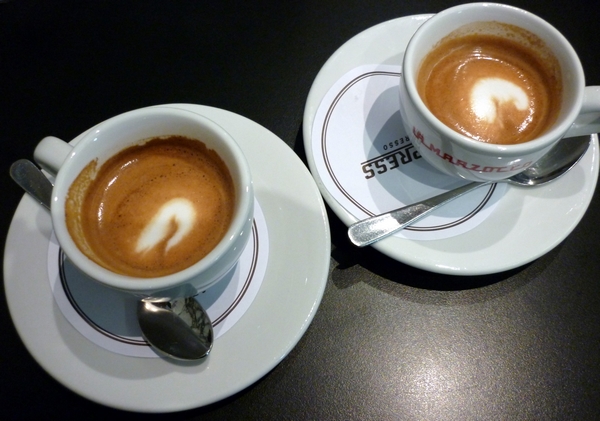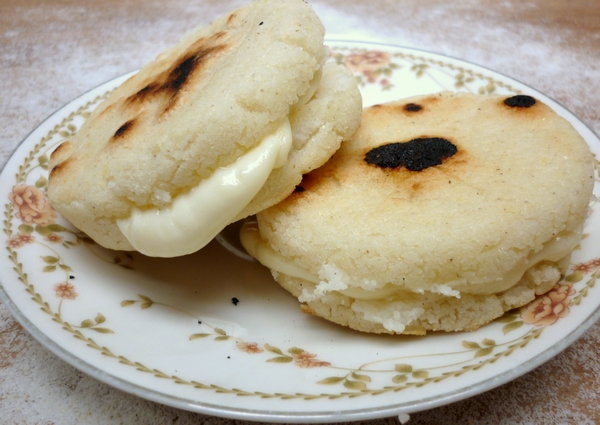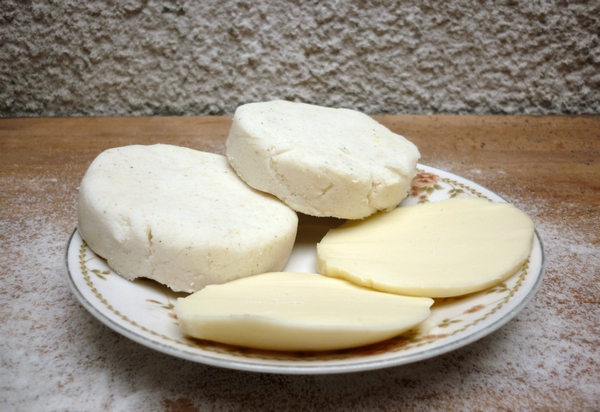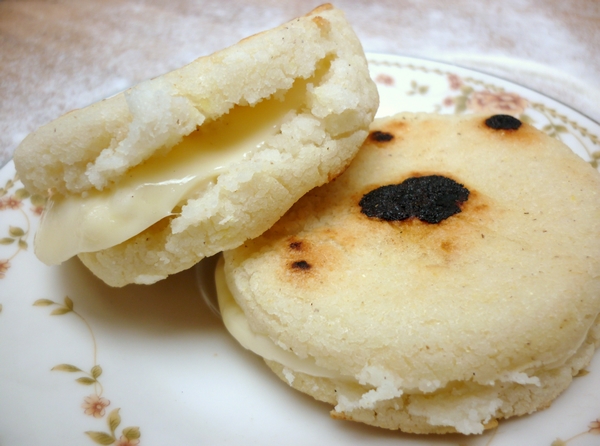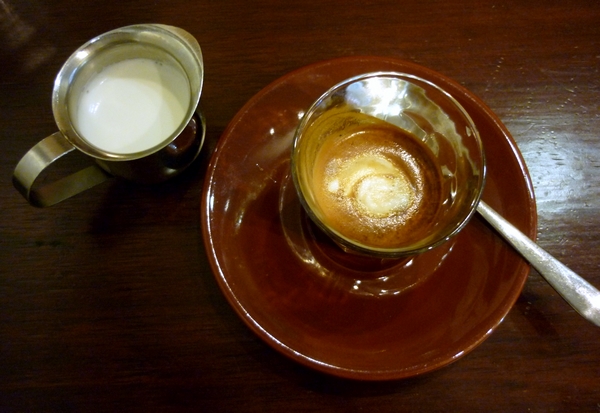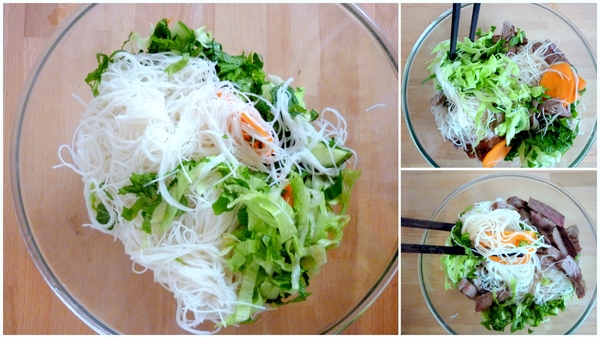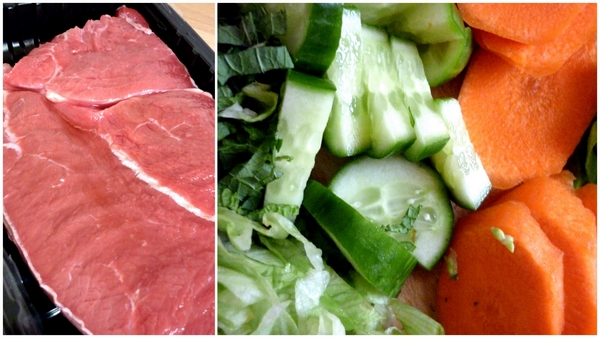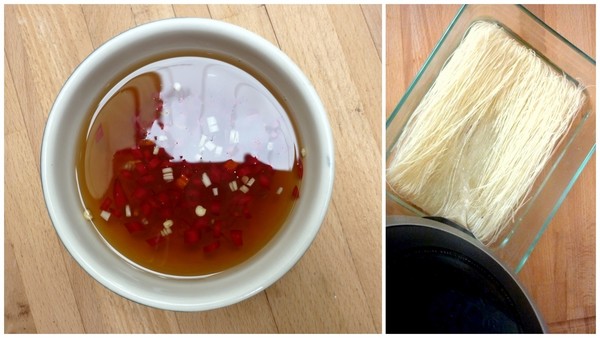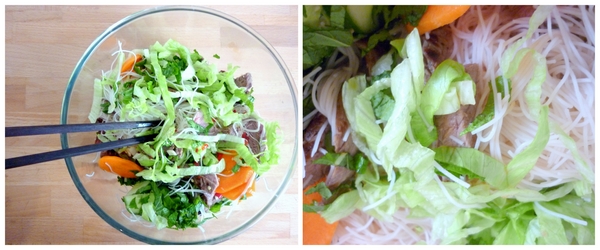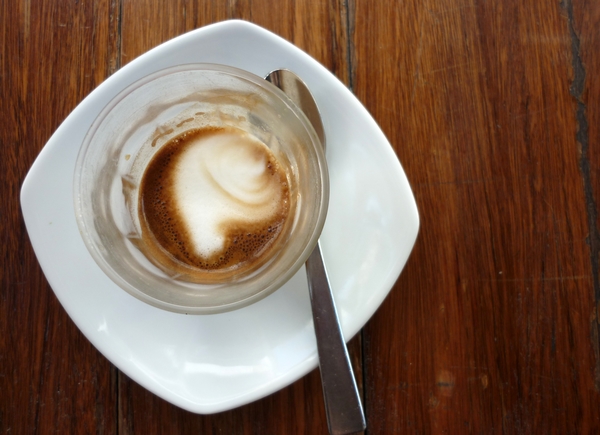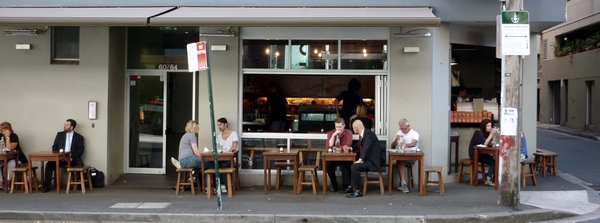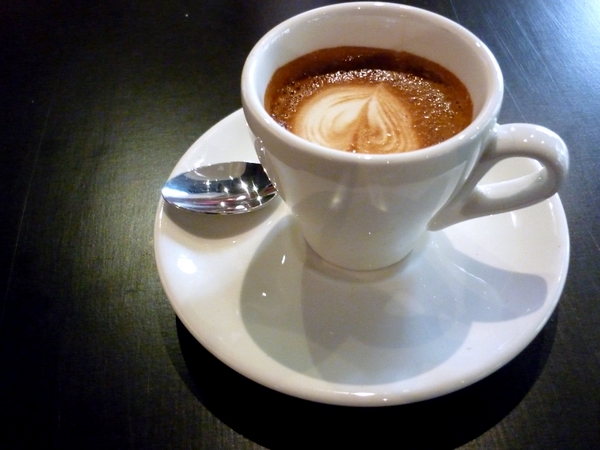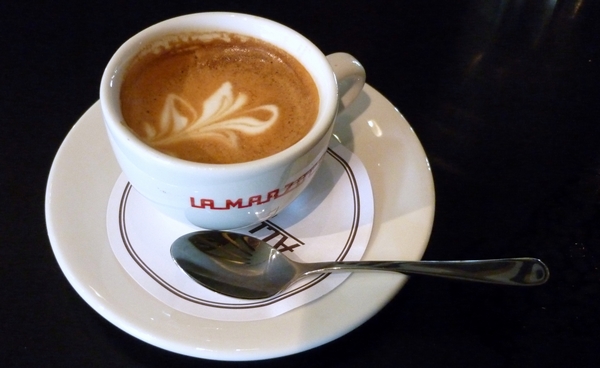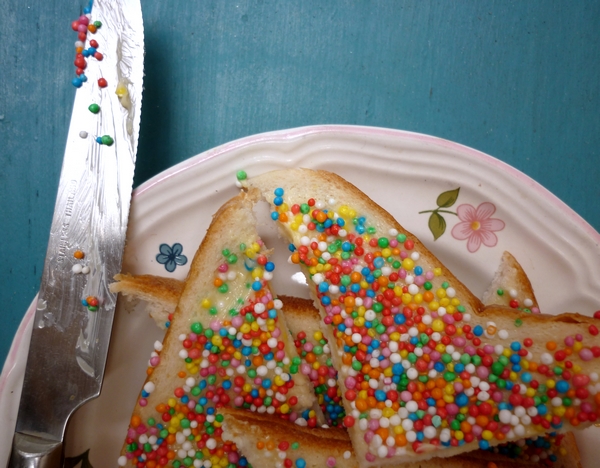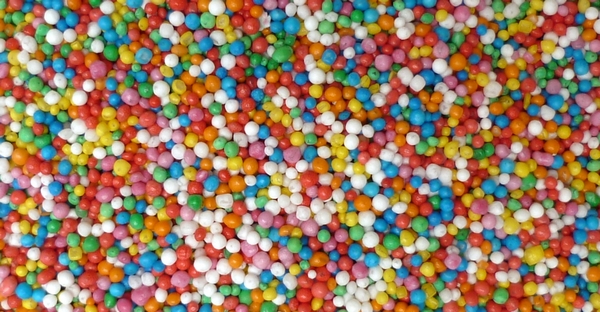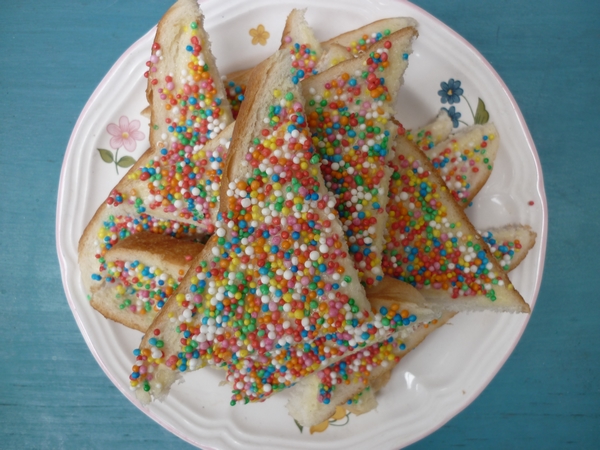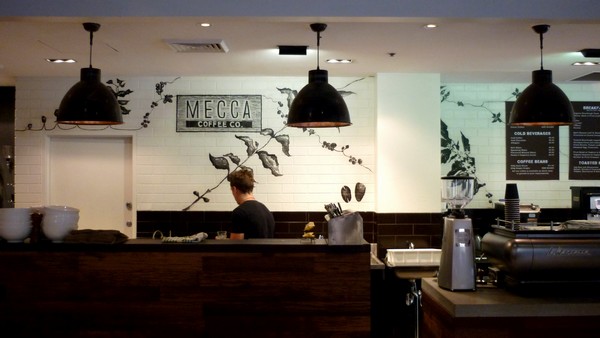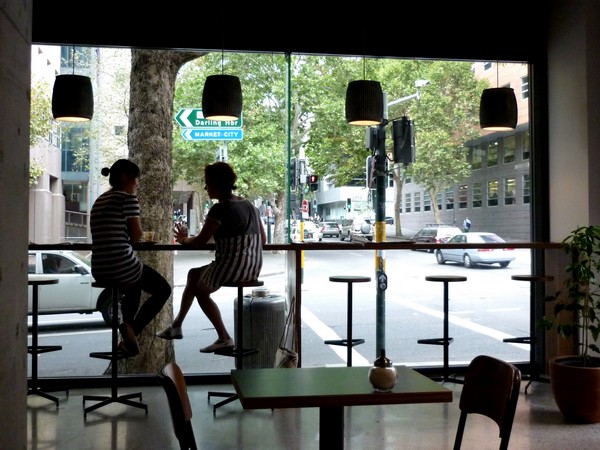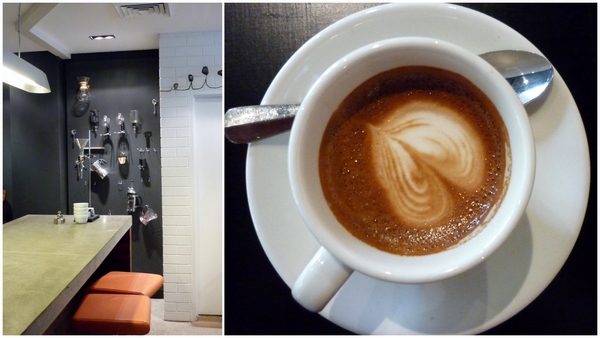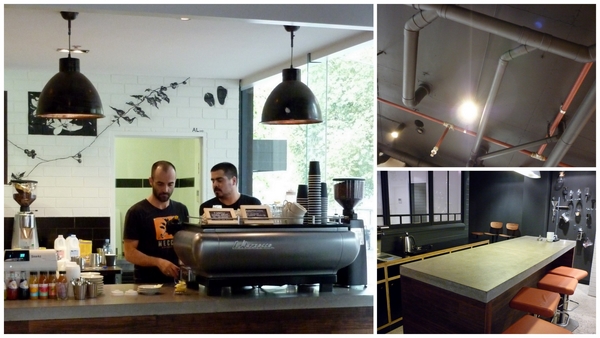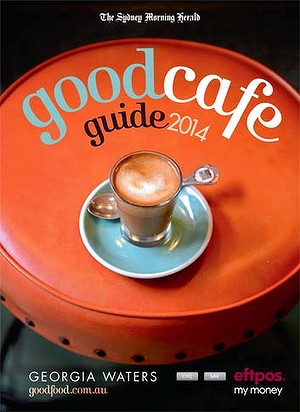I have a shameful secret to reveal. I don’t grind my own coffee.
Being a barista (well, not right now), this has sometimes led to a questioning of my coffee expertise, something along the lines of ‘Well, if you can’t taste the difference, I guess it’s no big deal.’ Oh, clever, I see what you did there. A little passive-aggressive jibe not at only my expertise, but at my actual sense of taste! Nice one. Then there’s the more overt ‘how can anyone who doesn’t grind their own beans know anything about coffee?’

Actually, I know great deal about coffee, definitely more than nothing. And it is this knowledge, along with my own personal circumstances, that has led me to drink it the way I do. First world problems, eh? Here are the 4 steps of reasoning that lead me to believe a grinder is not for me.
1. The ‘scale of flavour’ is a myth
Firstly, I call into question that there is one perfect coffee bean out there that, when perfectly ground and extracted, will yield perfect results for everyone. It has been proven that the majority of people like a light, caramel roast and there’s also a chunk that prefers a dark roast, so that in itself blows that idea out of the water. But let’s take a look at this imaginary scale anyway:
The perfectionist’s scale:
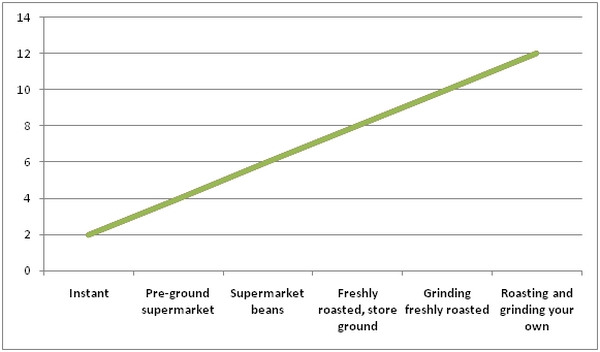
Now I have a billion issues with this graph. First, if this were the scale, how would the coffee machine factor in? What if you used French press, a $100 espresso machine, a $1000 espresso machine, stovetop, hot water, cold water extraction, syphon… the list goes on. What about skill? What about mistakes? What about how much coffee you have to throw out whenever you grind it wrong? There are too many variables, so let’s just look at two – flavour and mess/hassle.
2. Flavour vs. Effort. That’s my scale.
In this diagram, the blue line represents flavour and the red line represents mess/hassle.
Notice I’ve given pre-ground supermarket coffee a 2 for flavour, store-ground boutique coffee an 8 for flavour, and boutique beans a 9. So you’d think the beans are the natural choice. But not so, because grinding beans has a mess/hassle score of 8 which is quite high, where getting a store to grind it with a commercial grinder is a 2. What I’m looking for is a large gap between mess/hassle and flavour, with flavour at the top. Thus, store ground boutique coffee has a score of 4 (8/2) and boutique beans get 1.125 (9/8). That’s my reasoning.
3. I have skills, I don’t need gadgets.
The truth is I don’t need a graph, but I drew it to make a point- there is not an absolute value for flavour. There are standards. There are better methods and worse methods. But there is also what works for you. At the end of the day, I don’t own a grinder because it just isn’t that important to me, and I’m drinking much nicer coffee than a lot of people who do. It’s my theory that just as a poor tradesman blames her tools, a poorly skilled one buys fancy tools to make up for that lack of skill. And it doesn’t work.
4. Other factors
Of course there are other factors. The fact that I live in inner-city Sydney, surrounded by coffee roasters and great cafés is one of them. The fact that I am a trained barista is another. A kitchen the size of a built-in wardrobe is another – there’s no space for a grinder. And there’s a whole other issue as well, which is that the more complex the method, the more crap you are talked into buying, and buying stuff is not one of my favourite activities. But either way, my graph still stands. Because science.
What about you? Have you come up against any first-world-type judgements lately? Maybe you didn’t deglaze a pan properly? Maybe you don’t eat organic, or don’t breast-feed your child? Tell me about an occasion your common-sense reasoning was undermined by hipsters. Sock it to me, chums.
We all have that New Zealand export we’d just love to claim as our own. It may be an actress, band, TV show or recipe. It won’t surprise you that my case, it’s a coffee roaster.
Allpress Espresso started in New Zealand, now has a roastery in Zetland, Sydney, has opened a café in London and is slowly spreading its brand to cafés all over Sydney. They even have an iphone app to help you track down their brews.
Much like Flint and Steel, Allpress Espresso in Zetland is a coffee roaster as well as a café, but in the case of Allpress, it’s more than a hole-in-the-wall. It’s all slick stainless steel, marble bench tops and sheets of glass, industrial-chic with a touch of retro fitting right into its Zetland surrounds. You can see right through the cavernous space to the roasterie and watch them work their magic on the beans. Or, you know, forklift sacks of coffee around. Whatevs.
It’s one of those places where I’ve never had a bad coffee but at the same time, the last few times I’ve stopped by it’s been less than stellar. I don’t know how to explain what I mean, but the coffee tastes ‘rushed’ these days. That said, I’m a huge fan of their Carmelo and City Espresso blends which I often buy for home use.
The focus may be on the coffee but there is also quite a good menu of things like pastries, sandwiches, cakes, artisanal breads and breakfasts like soft-boiled eggs with sourdough soldiers, avocado and ricotta. It’s the kind of food I’d refer to as ‘assemblage’ rather than cooking but that doesn’t mean it isn’t tasty.
Allpress is one of those places where you want to time your visit carefully. Like many of my faves its closed on Sundays. Unless you’re into waiting for a table, on a weekday, the pre-work coffee rush is a bad time to go, and on Saturday it’s not so great to show up in the morning as the breakky/brunch crowd takes over. I’ve had quite good luck at 2pm, but then again, maybe I should just learn some patience.
What NZ export would you like to claim as your own?
Allpress Espresso
58 Epsom Road, Zetland 2017
(02) 9662 8288
Monday-Friday 7:00am – 3:00pm
Saturday 8:00am – 2:00pm
When I was a vego, I cooked heavy on the cheese. Although I didn’t eat a lot of it by itself, it was in or on anything it could be. I remember when I was 13 or so cooking up a pot of thick tomato pasta sauce and thinking to myself ‘What if I added tonnes of cheese to this?’ It was, in the words of Maeve O’Meara, a revelation.
It was a habit I had break when I moved in with my boyfriend, who was aghast at how much cheese I put in everything. Very early on in our relationship I made him Pizzoccheri, a dish from of Grandfather’s family made of buckwheat pasta, potatos, cabbage, garlic, and lashings of melted butter, cubed fontina and grated parmesan. And when I say lashings, I really mean lashings. My biggest mistake was letting him watch me make it. Although he said it was lovely, I could see him shudder as I poured about half a cup of melted butter over the dish. Not exactly heart smart.
These days my main cheesy outlet is romano or parmesan on pasta – I just can’t help myself. I love how cheese can take a plain, usually carb-based dish and turn it into something special. And this is definitely the case with arepas.
Arepas are made all over Colombia and Venezuela and often contain cheese, either mixed through the dough or stuffed in afterwards. They can also be stuffed with a variety of other fillings such as avocado, meat, black beans or fried eggs. They are commonly eaten as snacks or for breakfast but also can form part of a meal. They can be pan fried or deep fried and are both a street food and made at home as they are very easy to make and, in counties with corn as a staple, incredibly cheap. They are also mass produced, in fact, there is even a company in Brisbane that makes them, Grandma ¡Arepas!.
Arepas rellenas de queso (Arepas stuffed with cheese)
2 cups of Harina P.A.N. (pre-cooked white cornmeal)
2 ½ cups lukewarm water
1 teaspoon salt
8 slices of cheese (just smaller than the palm of your hand. I used provalone because it is round and also a bit ‘stringy’)
Pour the water into a large bowl and stir in the salt. Slowly pour in the white cornmeal. I assume this is to avoid lumps, but I’ve done it in reverse order and there was no discernible difference.
Knead the dough until smooth. It will be a bit sticky, so let it sit for a few minutes if you like.
Preheat a frypan to a medium high heat. You could also use a bbq if you want to do them all at once.
Meanwhile, divide the mixture into 8 balls and shape them by hand into flat patties. They should be the same thickness all the way through, about 1-2 centimetres thick and perfectly round. An easier method is to line an egg ring (for frying eggs) with cling wrap and push the balls of dough into shape using that.
When the pan is hot enough, place the arepas in. When they start to ‘pop’ or dance, flip them. They should be browned and have a thick crust, like ‘giraffe skin’. Continue in batches until all are cooked
Allow the arepas to cool slightly, cut open and fill with cheese. You can return them to the heat briefly if you want the cheese to melt.
What’s your favourite cheesy indulgence?
Something you will never, ever hear me say about a café, bar or any other place is that it is ‘so Melbourne.’ I know what people mean when they say that. I can even see what they’re talking about in my mind’s eye. It’s some kind of kitch, bentwood chaired, astro-turfed, bicycle-wheels-dangling-from-the-ceiling, exposed-vintage-lighbulb-studded hole-in-the-wall with hipster clientele and fashionably–mussed student waiters. It’s zany. It’s ironic. It’s ‘more european’. But I refuse to use this term.
I’ve never understood the Melbourne/Sydney rivalry, mostly because it is so one-sided. People from Melbourne will always try and sell it to you, as if Melbourne invented any or all of the following things: coffee, hipsters, black clothes, laneways, graffiti. They’ll give you one million reasons why it’s better than Sydney. But Sydneysiders don’t give a damn, and I in particular don’t give a damn as long as the coffee’s good. We all like upcycled vintage sideboards, we just don’t talk about them all the time. Oh and p.s.- there ain’t no such thing as a long macchiato.
Klink Handmade espresso is the kind of café that would be right at home in Degraves street or equivalent, but I won’t hold that against them. You’ll find it in the foyer of the Gaffa gallery, housed in a strawberry ice cream coloured heritage building. It’s on Clarence street, near the astro-turfed Grandma’s Bar and a couple of other coffee places with good reps. There’s not a lot of room to sit, so if you’d prefer takeaway you can order through the window.
Klink, like The Kick Inside uses Golden Cobra espresso. I wasn’t disappointed with my macchiato as it came complete with a jug of frothed milk, just to be on the safe side. That was helpful as my coffee companion found her espresso a tad bitter and so ended up with a macchiato after all. Sit down coffee is expensive here- $3.40 for a macchiato. But it’s a good place for a quick coffee and a chat.
So, what’s an expression that drives you mad?
Klink Handmade Espresso
281 Clarence Street, Sydney 2000
(04) 1511 8505
Monday-Friday 7:00am – 3:00pm
I’ve always had an interest in what people really eat and cook. Not what they say they eat, not what they blog but what they actually eat. The food media that gives me the most satisfaction is that which starts with this very obvious question- what do people eat? It’s why I adore shows like Food Safari and blogs like Smitten Kitchen and The Stone Soup, and also why one of my favourite people to follow on twitter is Pantry sniffer, who tweets entire recipes in 140 characters.
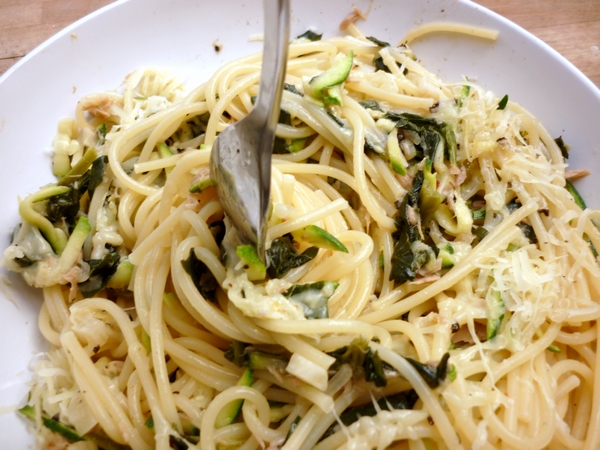
When I started Corridor Kitchen, I stressed that my photos wouldn’t be up to scratch, as my camera is a pretty basic point-and-shoot that doesn’t tend to focus properly. As a result I took hundreds of pictures of each dish. This, along with needing to photograph food in daylight hours meant I had to cook specifically to blog. In other words, I wasn’t blogging my actual daily eats, or even my once-a-week eats.

I’ve recently realised that this runs contrary to the whole ethos of Corridor Kitchen of common sense, cheap and practical food. Since I started blogging, my everyday cooking has become decidedly less creative, and I find our house filled with more baked goods than I’d care not to eat. I want to believe that the creative side of cooking, that intuitive what’s-in-the-fridge/pantry-and-what-can-I-make-from-it approach my mother taught me is blogworthy.
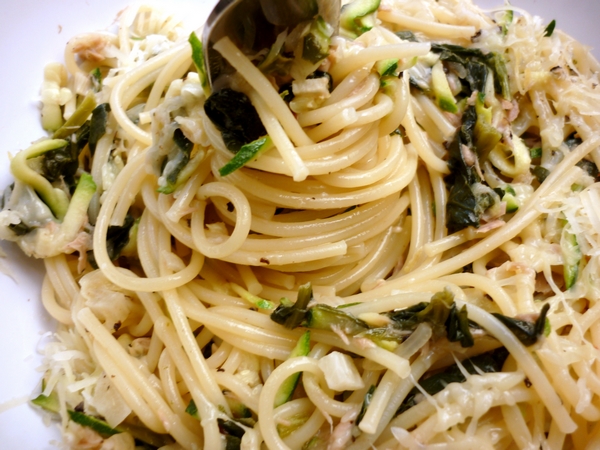
This dish is one I’ve made a lot lately, and something I’ve only ever cooked for myself. It’s made with things I always have on hand and is very flexible . I take my new-old favourite, spaghetti and coat it in a garlicky, lemony sauce with chunks of tuna, zucchini and spinach, sprinkling it with romano and freshly cracked black pepper. The building blocks are pasta, tuna or chicken, garlic, wine dregs, butter and oil, and a hard cheese with any green veggie you like.I always have frozen spinach on hand so I used that, and I had a zucchini this time around but I’ve used green beans, cabbage and even buk choy in the past.
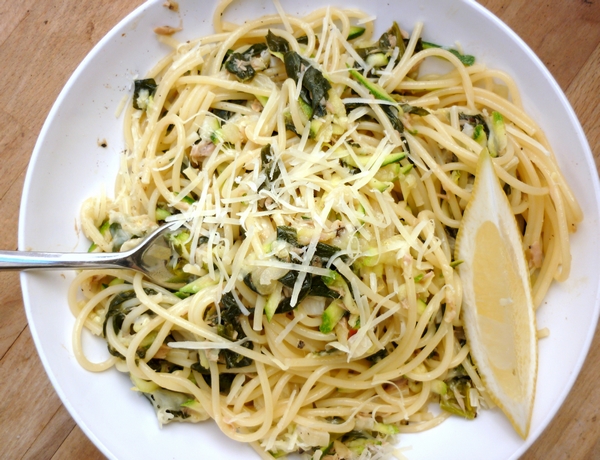
Lau’s Pantry Pasta
(serves 2)
Enough spaghetti for 2 people
A generous dollop of butter
A good slosh of olive oil
1 very small onion, diced
Pinch salt
6 cloves garlic (so about twice as much garlic as onion), finely chopped
Pinch chilli flakes
The zest of half a lemon
1 individual 95g tin of tuna – I used a lemon pepper flavoured one but you can use any kind.
1/2 cup white wine dregs
1 zucchini, grated
80g frozen spinach, defrosted (microwave 1 minute on high)
The juice of half a lemon
Romano and freshly ground pepper, to taste
Put the pasta on to boil as per the packet instructions. I turn the stove up full blast, boil a jug, pour the water into the pan and once it boils, and add salt. When it comes to the boil again, I snap the spaghetti in half and cook for 8 minutes.
Meanwhile, heat the butter and oil in a medium frypan. Add the onion and stir. Once translucent, add the garlic, chilli flakes, salt and lemon zest.
Once this is cooked, add the tuna, a ladleful of the boiling pasta water, the wine and the spinach. Cook a few minutes. Add the zucchini and cook a couple of minutes until soft.
Once cooked, add the drained pasta and some pepper and salt. Stir through while still on the heat. Serve with plenty of romano and freshly cracked black pepper.
What’s your favourite home alone dish?
What makes a subject blogworthy? In certain blogs, such as interior design, wedding, craft and food blogging, it’s the photos. There are very few blogs on these subjects that can successfully publish image-less posts. Recipe blogs will almost always feature photos (check out this popular wordless recipe) and even brief reviews of restaurants and cafés will feature pictures of the food and the setting. This makes sense, as in its current incarnation, we cannot smell, taste or feel things through the internet.
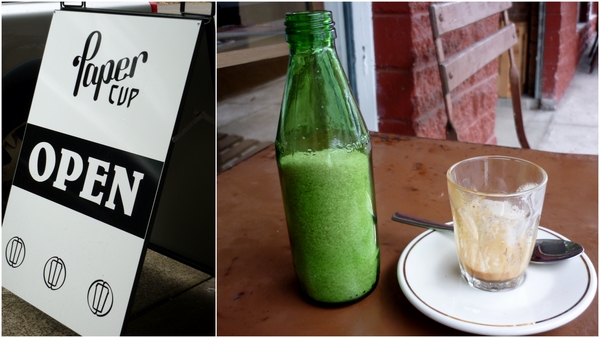
Images can illustrate a blog but also act as a kind of pornography. ‘Food porn’ is a common term these days, and a comment made by John on my last post got me wondering- should we be blogging the supposedly unblogworthy? Does only blogging the gorgeous, the visually appealing, the photogenic serve to undermine the genuine, ‘authentic’ feel blogging creates, making food blogs less like personal cookbooks and more like glossy food magazines? I know of a recent example in a certain wedding blog featuring so-called ‘real weddings’ as inspirations for brides which turned out to be a professional photo shoot complete with a six figure budget and models in place of the bride and groom. Hardly a real wedding.

Of course, I’m guilty of blogging only the beautiful. At one stage my recipe content was skewed heavily in favour of desserts, sweets being generally easier to photograph than savoury dishes. Once it expanded to include café reviews I wrote my own brief (cafés I would go to, newish, solid places with a focus on coffee) but soon realised I had an implied brief as well; cafés that would look good in photographs. I know this skews my content in a particular direction and perhaps leaves out some valuable examples of great places to get coffee. But at the same time, I appreciate good interior design and these are the kind of cafés I like to visit, so the implied brief is still a genuine one.

So when I came across this gorgeous description of a new Stanmore cafe ‘Paper Cup’ in Amanda’s blog, ‘the cake + the knife, a love story’ I knew I’d have to get there asap. In fact, I went the very next morning, keen to check out the new endeavor from Clipper Café’s Adriano Matteoni. I was not disappointed.

This place more than meets my self-imposed brief. Firstly, it’s easy to get their by public transport. Right next to Stanmore Cellars, Paper Cup is a 2 minute walk from Stanmore station, so I was there in a flash. Secondly, it has a very limited menu, which might sound like a negative but in many cases, communicates seriousness about coffee (and, as a former barista, is my own personal dream set-up). I’ve always been a big fan of simplicity and Paper Cup has only 5 items on their menu, with additional pastries should you feel like a sweet treat. And finally, the interior is small and bright, edged with exposed brick and crowned with a calculated tangle of red wiring and industrial shades. It’s cute, quirky and photogenic. Perfect.
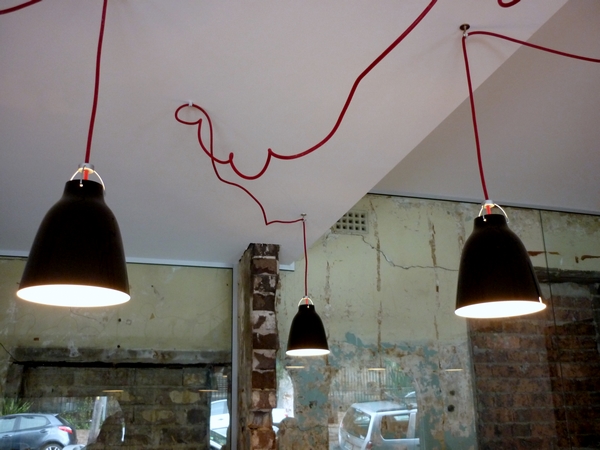
I order a macchiato and sit. The staff seem very friendly and my caramel-y shot is brought out promptly with a carafe of water and a glass. I’m pretty thirsty as I rushed out of the house to get my caffeine fix as quickly as possible, so I drain the carafe. As I’m eavesdropping on a hideous-yet-I-can’t-stop-listening conversation between two inner-west helicopter parents, I gaze around the area. I’m just in the middle of planning my relocation to Stanmore when I realise my glass is being refilled from a fresh carafe. Service with a smile.

I go inside to pay, have a quick chat and snap a few photos. It turns out Paper Cup has only been open about a month and business is going well. I can see why. The coffee is delicious (they also do cold drip if you’re that way inclined), the decor is just the offbeat side of minimalist and the service is prompt and friendly. As I wind my way home on a caffeine high, past the iron-lace-edged terraces of Stanmore, I know I’ve found another great café to add to my ever-growing list of favourites.
Paper Cup
157/161 Cambridge St
Stanmore, 2048
(02) 9000 0000
www.papercupcoffee.com.au
Monday – Sunday 6:00am – 4:00pm
These days, you can’t turn on the TV without the giant head of a celebrity chef glaring back at you. Food is one of the most popular topics on television, with Masterchef, My Kitchen Rules and a raft of ABC and SBS food programming available. It is also one of the top topics for blogs, after technology, fashion, celebrity gossip and…how to make money from blogging. In fact, in 2010, a total of 88 new food blogs were started in Sydney alone (*cough* Corridor Kitchen *cough*). Appearances by Jamie Oliver elicit Beatles-fan-like reactions of screaming and fainting. Nigella Lawson’s recent visit to Australia had pilgrims flocking to Melbourne from a Master class. Visiting a café is considered an activity in and of itself. There is an entire pay TV channel, Lifestyle food, devoted to food. We are a nation of foodies obsessed.
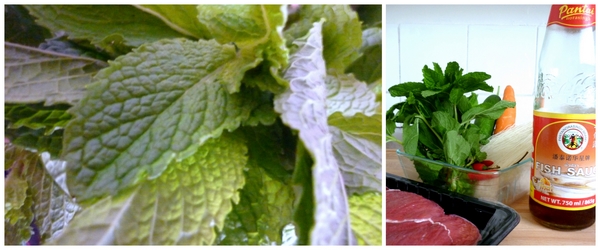
As a food blogger, I feel a complicated mixture of fascination with and a desperate yearning to avoid this trend, even though I am clearly a participant. But I do have my favourite food-related productions, blogs and books, as does most anyone who enjoys food. I devoured Michael Pollan’s ‘In Defence of Food’ in an afternoon. When I discovered Lisa Fain’s blog Homesick Texan I read every single entry over the course of a month. And I watched every episode of Meave O’Meara’s Food Safari on SBS, my boyfriend later purchasing all three series’ on DVD. When they arrived, I scoured the special features for new recipes.
What works so well about the show is the way it reveals how people really cook in their own homes. Food Safari covers 35 of the cuisines you will find in Australia. Each episode covers basic ingredients, dishes and cooking methods as chefs and home cooks alike present recipes their own kitchens. Often these recipes are thought of as nothing special by those who make them, but through sharing them, they realise how special they really are. It’s also heartening to see how family businesses often start through necessity- e.g. through not being able to find kimchi or tofu or mozzerella in Australia, kimchi and tofu and mozzerella factories spring up!
One of the Food Safari recipes I often cook is Bun bo xao, a rice noodle salad with stir fried beef. The recipe is presented by Chef Luke Nguyen, chef at Surry Hills’ Red Lantern and host of Luke Nguyen’s Vietnam on SBS. Because I am a lazy cook at heart, and perhaps because I was a vegetarian for 10 years I cut the meat after I cook it. This makes my version a little more like your standard Sydney Thai beef salad than a Bun. I can’t make any claims about how food in Thailand or Vietnam is prepared- unfortunately, I’ve never visited either country.
A quick tip: The nuoc cham will keep for ages in the fridge so don’t worry that you’ve made too much. The Food Safari recipe makes about enough for 4 people.
Bun bo (adapted from Luke Nguyen’s recipe as featured on Food Safari)
Serves 2
200g – 300g sirloin or rump steak or any lean, boneless steak at least 2cm thick
3 Tablespoons fish sauce
1 tsp finely chopped lemongrass
Canola spray
200g thin rice vermicelli
Boiling water
2 large iceburg lettuce leaves
1/2 small bunch mint
6 perilla leaves (optional)
1 carrot
1 spring onion
1 lebanese cucumber
Nuoc cham
Pour the fish sauce and lemongrass over the steak. Cover and 5-10 minutes in the fridge.
Make the nuoc cham as per recipe.
Soak the noodles in boiling water for 2 minutes, chop up with scissors, drain and rinse with cold water.
Finely shred lettuce, perilla and mint, finely slice carrot and spring onion and slice cucumber lengthways and chop. Place in a colander with rice noodles and rinse. Be sure everything is properly drained so the salad won’t get soggy.
Heat a frying pan to very hot. Place whole steak in and sear. Cook for around 2 minutes and turn to cook other side. It really depends how you like it as to how long you cook it. The important thing is that it is cooked on a very high heat.
Separate the vegetables and noodles between 2 large bowls. Immediately slice the steak into thin strips, across the grain and divide between the bowls. Spoon over some nuoc cham and serve. The idea is for each person to stir up their salad themselves, adding more nuoc cham to taste.
What’s you fave product of foodie-ism?
We’ve all been there. Eagerly awaiting that fist sip of coffee only to find a disappointing brew that can only be described as ‘that’s not what I ordered.’ It’s all too easy to criticise, saying you asked for ‘extra hot’ or ‘strong’ or ‘not too much froth’ but these are subjective terms. Wouldn’t it be lovely if someone would give you a user’s manual for the wank-fest that is coffee these days? Well, somebody has. Here are the five simple rules to get not only the correct coffee, but the best.
1. If you don’t want sugar, never, ever ask for ‘no sugar’.
I know many people do this to pre-empt the irritating, automated query that comes free with any takeaway coffee almost immediately after you’ve placed your order: ‘any sugars’? However, in a crowded, noisy coffee shop, no matter how good the barista’s ears, ‘no sugar’ almost always sounds like ‘one sugar’ and that’s what you will get, which will annoy you no end.
The reason every customer gets asked ‘any sugars?’ is to save us all from that all too common moment after a customer receives their small cap and asks ‘did you put the sugar in?’ and then the barista has to take the coffee, open it, add the required number of sugars, stir and re-lid it. This makes no sense at all because HOW ON EARTH WOULD THEY KNOW HOW MUCH SUGAR TO PUT IN?! So undergo the annoying automated query. You are saving, not wasting time.
2. Don’t leave the coffee shop, either literally or mentally.
It’s a bad idea to talk on your phone, listen to your mp3 player or just not listen for your order. It’s an even worse idea to expect to be served while you’re actually talking on your phone. This ensures grumpy service and its likely you’ll end up with the wrong coffee.
Although the number of people who take the wrong coffee is pretty miniscule it is hugely annoying, not only for the person who does it but for the customer who has to wait for a new coffee and for the barista who has to make their coffee all over again. Listening out for your order assures this won’t happen, as does keeping an eye on who ordered before you. Chances are when they collect their coffee, you’re next.
3. Know your order
It sounds so obvious, but you’d be surprised how many people don’t know what they order. I once had a guy come in and order three coffees: a macchiato and two lattes. What he actually wanted was a mug of cappuccino and a mug of long black. He didn’t even know how MANY coffees he wanted.
In a lot of cafés, the staff know all their regular customers’ orders. But if there is ever a new staff member who doesn’t know your order or you change cafés, you need to know what it is you order. So when someone asks you ‘what would you like today?’ it is not at all helpful to say ‘She/he knows’ or ‘my usual’ if you have never in your life seen the person standing in front of you.
4. Expect the barista to know what the coffee they just made is. Don’t expect them to know whose it is.
Once your coffee is made, if the barista yells out ‘large caramel cappuccino with two equals’ and that’s what you ordered, there’s not much point in asking ‘is that my coffee?’. The barista, in a flurry of making 25 coffees at once, will have no idea, he/she will only know what the coffee is as he/she most likely did not take your order. If you’ve been paying attention, you’ll notice the person who ordered before you just grabbed their coffee so it must be yours. Or you might notice you are the only person left in the coffee shop. Or you might notice that your order is so incredibly unique that no one else could have ever dreamed it up. A large-strong-half-skim-half-full-cream-Chai-latte-no-cinnamon-on-top-extra-hot, for example. That’s yours for sure.
5. Want stronger coffee? Reduce milk, don’t add shots.
The cheapest way to strengthen coffee is to reduce the amount of milk, not add more coffee shots. This little-known secret also inadvertently leads the barista to take your request more seriously. Why is this? Well, it’s because by asking for a small ¾ full cappuccino instead of a double shot small cappuccino, you are being particular and your order is memorable. This means that the barista knows if they get your coffee wrong you’ll return it, and so, to avoid this, they’ll make exactly what you asked for. You’ll also get their full attention so there’s less chance of mistakes.
So there you go. Truly, it is knowing how not to order your coffee that is the key to a) receiving what you ordered and b) it tasting delicious. Why? Well, a) because the barista will have a clear understanding of what you want and b) they will go out of their way to give it to you.
I bet you’ve all got something to say about café etiquette. What really irks you, chums?
Yesterday Lorraine over at Not Quite Nigella described the special treat of being given 20 cents to buy something at the school fete and tossing up between honey joys, pikelets, toffees and other assorted goodies, eventually choosing whichever was the biggest. This reminded me of another nostalgic gastronomic occasion – kids’ parties, where the unfettered appetites of small children are allowed to run wild.
 When I was a child, my parents would let me and my brothers have a party with our friends every second year, and we’d always get to choose a cake out of the Australian Women’s Weekly Kids’ Birthday Cake Cookbook, which, incidentally is one of The Age’s most influential Australian Cookbooks. The cake, be it a train, a Disney character, a doll or a swimming pool filled with green jelly (this was way back in the olden days before blue jelly was invented) would take centre stage amongst the mini frankfurts, party pies, sausage rolls, butterfly cakes and fairy bread on the table. This was one of my favourites, I think I had it for my 5th birthday.
When I was a child, my parents would let me and my brothers have a party with our friends every second year, and we’d always get to choose a cake out of the Australian Women’s Weekly Kids’ Birthday Cake Cookbook, which, incidentally is one of The Age’s most influential Australian Cookbooks. The cake, be it a train, a Disney character, a doll or a swimming pool filled with green jelly (this was way back in the olden days before blue jelly was invented) would take centre stage amongst the mini frankfurts, party pies, sausage rolls, butterfly cakes and fairy bread on the table. This was one of my favourites, I think I had it for my 5th birthday.
Kids’ parties were never the place to worry about nutrition. Many a picture of me graces the family albums wearing a crooked party hat and an insane sugar-fuelled grin, my mouth smeared with tomato sauce and a trail of hundreds and thousands down the front of my party dress. And I wouldn’t have it any other way.
Fairy bread is another of the few Australian/New Zealand recipes, along with Pavlova and Lamingtons that are entirely unique to their region. It’s something you just take for granted and never give a second thought until someone presents a plate of it to you, and then it takes you back to that place of sugar-fuelled madness not exclusively reserved for children. I have wanted to post a recipe for fairy bread for a while but it’s so easy to make it hardly seemed worth recording. Then I realised that there are probably thousands of recipes that have been forever lost because people thought they were ‘too obvious’ or ‘just common sense.’ To be fair, fairy bread has appeared all over the web, even on U.S. superblog The Kitchn, an arm of Apartment therapy so it’s in no danger of being lost any time soon. But I still want to post it myself, because I love it.
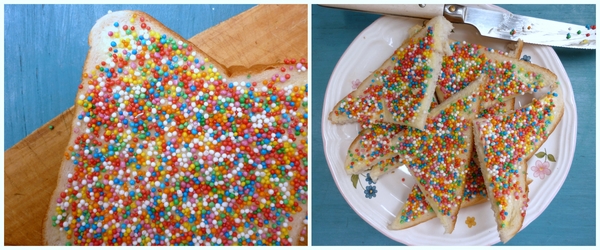 The key to fairy bread is soft, mass produced bread- no other kind will do. Also, make sure you use hundreds and thousands, the round, crunchy rainbow sprinkles rather than the flat ones. Always be sure to spread the butter all the way to the crust. And finally, rather than sprinkling the hundreds and thousands over the thinly-buttered bread, pour them onto a plate and dip the bread in, allowing the sprinkles to stick.
The key to fairy bread is soft, mass produced bread- no other kind will do. Also, make sure you use hundreds and thousands, the round, crunchy rainbow sprinkles rather than the flat ones. Always be sure to spread the butter all the way to the crust. And finally, rather than sprinkling the hundreds and thousands over the thinly-buttered bread, pour them onto a plate and dip the bread in, allowing the sprinkles to stick.
Fairy bread
1 loaf of fresh, soft, white bread
Softened butter (or margarine if you must)
1 large packet of hundreds and thousands
Pour the hundreds and thousands into a plate or flat bowl. Spread as many slices of bread as you like with a layer of butter.
Dunk the bread into the hundreds and thousands, butter side down. Shake off any excess. Cut the bread into four triangles.
Serve to whoever is closest. It’ll be demolished in 5 minutes flat.
What’s your favourite childhood party food?
There’s an interesting phenomenon when it comes to coffee in the Sydney CBD. It’s fast. It’s cheap. It’s abundant. It’s usually pretty good. But there’s not often time to blow your mind at 9:45 on a Tuesday morning. And come the weekend, going out for coffee becomes a daunting prospect as the men and women in suites retire to the inner and outer suburbs for a spot of R & R and CBD coffee more or less shuts down.
Another phenomenon is the ‘black holes’ all over the CBD. Sure, you’re spoilt for choice on the Surry Hills/CBD border, but what about Chinatown/Ultimo? I struggled to think of anywhere off the top of my head, but then, Ultimo never really occurs to me as a place to go for coffee. Until now.
There are a few well known ‘solid’ cafés in the CBD and Mecca is often cited as one of them. They now have three stores, one at 67 King Street, one at 1 Alfred Street and the newest addition in Ultimo at 646 Harris Street, just down from ABC studios in what used to be Gloria Jeans. Having previously checked out their King Street café I decided to give the Harris Street Mecca a go as it is sort of walking distance from my place and only opened last month.
The interior of Mecca is quite spacious so there’s plenty of places to sit, with polished concrete floors and sheet glass windows. The decor is sparse but welcoming, old-style wooden school chairs and polished black tables arranged in an orderly fashion. Not unlike Don Campos, the decor screams professional, but in this case with a touch of quirkiness. We ordered and payed for our two macchiatos at the counter before sitting down. Our coffees came promptly and were a tad milkier than many macchiatos, but I never consider that a problem myself. The flavour was creamy and rich and it was nice to sit for a while and not worry that we were taking up a table. I’m used to the cramped cafés of Newtown and surrounds which are generally pretty tiny, not the kind of places where you could spend the whole morning.
We ordered and payed for our two macchiatos at the counter before sitting down. Our coffees came promptly and were a tad milkier than many macchiatos, but I never consider that a problem myself. The flavour was creamy and rich and it was nice to sit for a while and not worry that we were taking up a table. I’m used to the cramped cafés of Newtown and surrounds which are generally pretty tiny, not the kind of places where you could spend the whole morning.
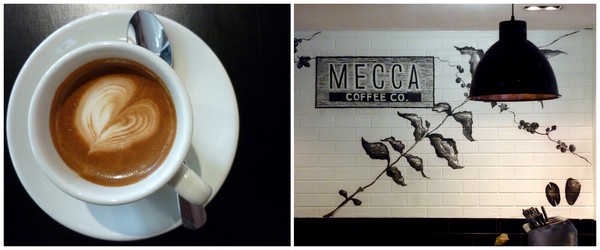 Mecca also have a breakfast and lunch menu with various toast-with-stuff options for breakfast and sandwiches, salads and Panini for lunch, which all seemed very reasonably priced. There is also a liquor licence in the works. All in all a solid experience and I would definitely visit again.
Mecca also have a breakfast and lunch menu with various toast-with-stuff options for breakfast and sandwiches, salads and Panini for lunch, which all seemed very reasonably priced. There is also a liquor licence in the works. All in all a solid experience and I would definitely visit again.
What are your top picks for places to go in Ultimo?
Mecca Espresso
646 Harris Street Ultimo, 2007
(02) 9280 4204
Monday-Friday: 7:00am – 4:00 pm
Saturday: 7:00am – 3:00 pm
About me
 Sharing easy recipes, hunting down the best coffee. Honest accounts, nothing too serious. Read more...
Sharing easy recipes, hunting down the best coffee. Honest accounts, nothing too serious. Read more...Recent Posts
- Aerpress means no more shit #travelcoffee and #workcoffee
- Why I write and four ace bloggers who do it better
- The five best things I ate in London
- Shoreditch is awesome, airports are not
- I quit sugar? Do I bollocks.
- Cubao Street Food, Alexandria
- The Reformatory Caffeine Lab, Surry Hills
- Brewtown Newtown
- Stay caffeinated over Christmas
- Gumption by Coffee Alchemy, Sydney CBD
Popular posts this month…
 Review – Philips Saeco Intelia posted on January 10, 2012
Review – Philips Saeco Intelia posted on January 10, 2012  Sparkling Long Black posted on May 10, 2011
Sparkling Long Black posted on May 10, 2011 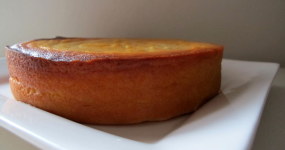 Kosher Whole Orange Cake posted on July 5, 2011
Kosher Whole Orange Cake posted on July 5, 2011 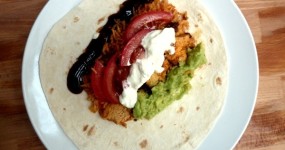 The quest for Mex part 2 – Feisty Chicken Burritos posted on December 21, 2010
The quest for Mex part 2 – Feisty Chicken Burritos posted on December 21, 2010  Vella Nero Coffee Couture, Sydney CBD posted on June 28, 2011
Vella Nero Coffee Couture, Sydney CBD posted on June 28, 2011 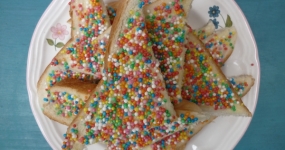 Fairy Bread posted on March 11, 2011
Fairy Bread posted on March 11, 2011 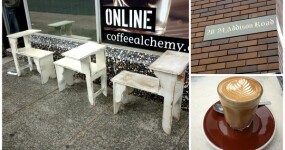 Café review – Flint and Steel (Coffee Alchemy), Marrickville posted on March 1, 2011
Café review – Flint and Steel (Coffee Alchemy), Marrickville posted on March 1, 2011 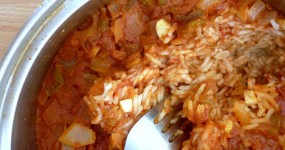 The quest for Mex part 1 – Mexican Red Rice posted on December 17, 2010
The quest for Mex part 1 – Mexican Red Rice posted on December 17, 2010
Disclaimer:
All opinions in this blog are mine, an everyday, real-life person. I do not accept payment for reviews and nor do I write sponsored posts. I do not endorse the content of the comments herein.

